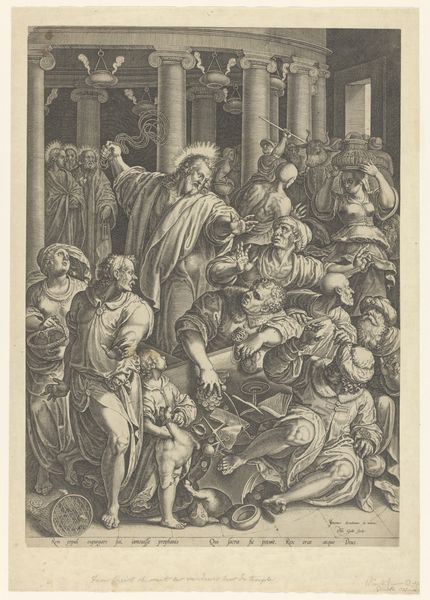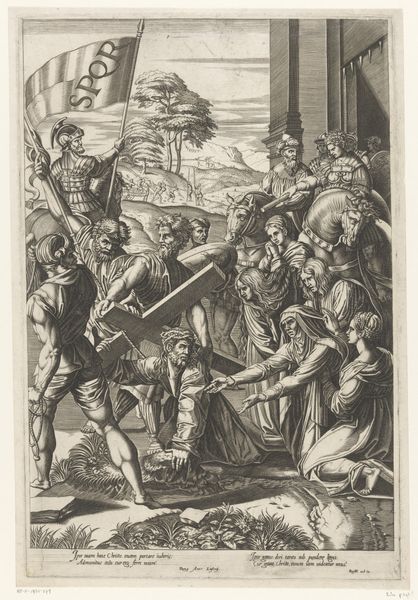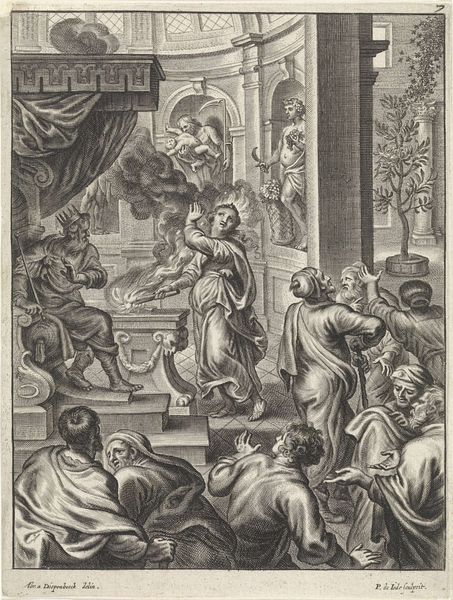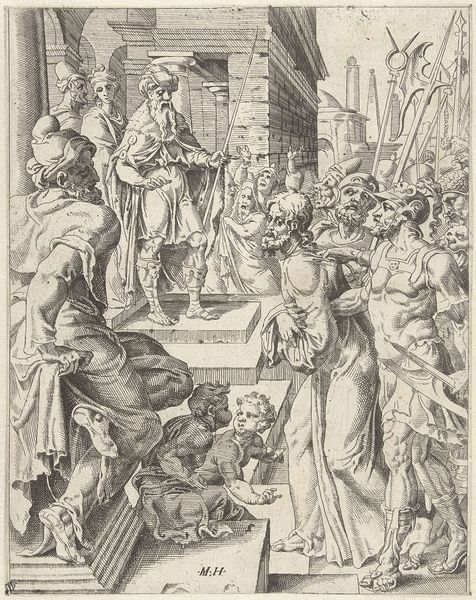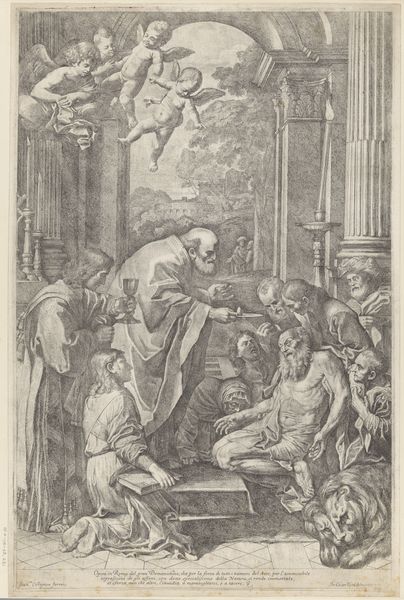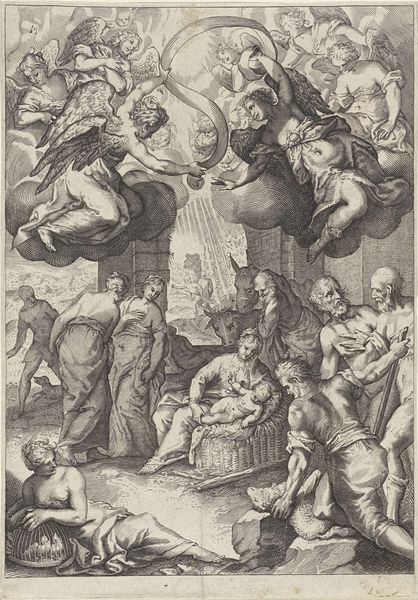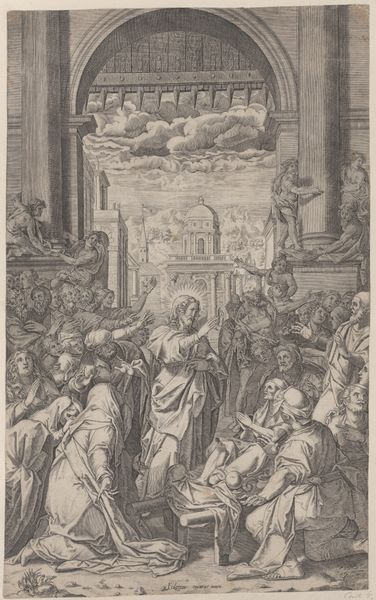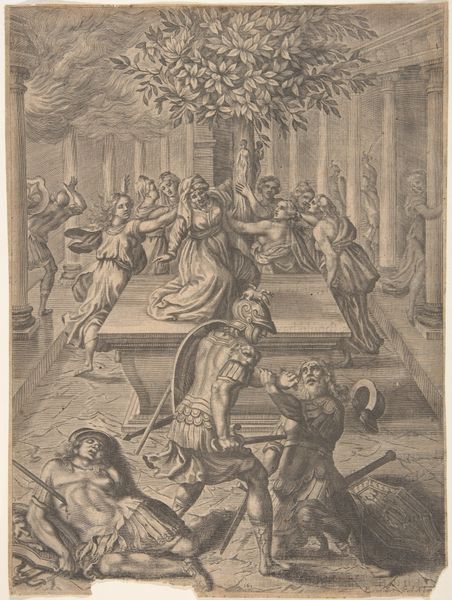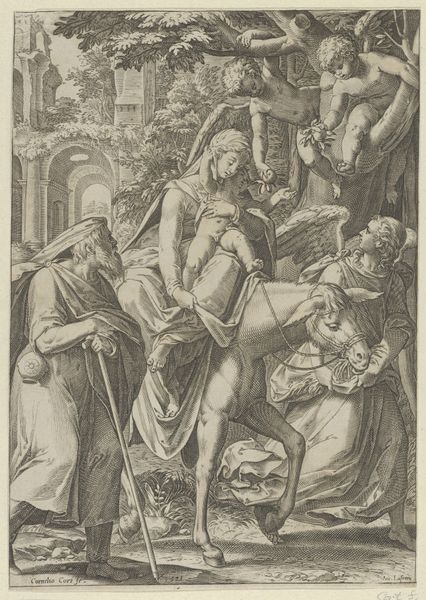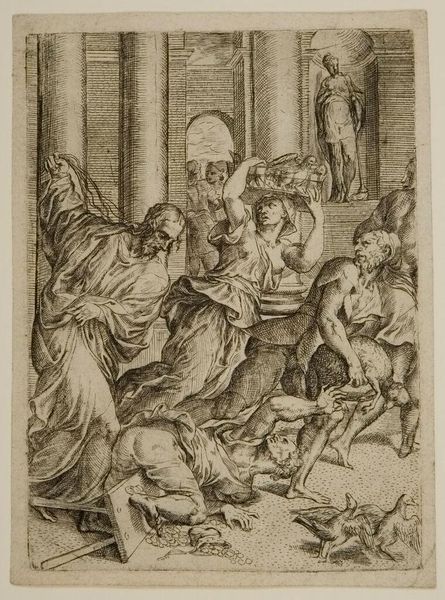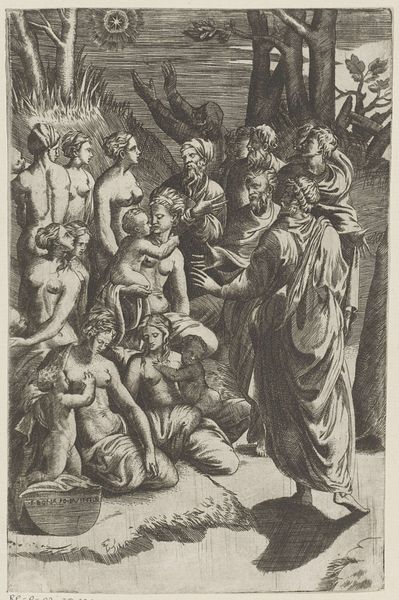
drawing, print, etching, intaglio, engraving
#
drawing
#
narrative-art
# print
#
etching
#
intaglio
#
figuration
#
11_renaissance
#
history-painting
#
italian-renaissance
#
engraving
Dimensions: height 487 mm, width 337 mm
Copyright: Rijks Museum: Open Domain
Editor: This is Agostino Carracci’s "Adoration of the Magi," made somewhere between 1567 and 1602. It's an engraving, part of the Rijksmuseum's collection. I’m immediately struck by how he's managed to convey so much detail and depth using just line work. What kind of cultural factors would have been affecting Carracci when he created this? Curator: Well, let's consider the climate of the Italian Renaissance, deeply rooted in religious narratives. Prints like this had a very specific role. These weren't just artworks hanging in palatial homes; they were a primary way religious imagery circulated among a wider populace, even across different social strata. Editor: So, it's more than just devotional art? Curator: Precisely. Think of the patronage systems and the Counter-Reformation's emphasis on clear, didactic imagery. Carracci, part of a famous artistic family, was strategically positioning himself in the visual landscape. He's using an established narrative, "The Adoration," to meet specific demands from religious institutions, noble families, and the general public. It demonstrates his technical skill but also his savvy understanding of the market and its expectations. Editor: Are you saying there's a socio-political element woven into what might appear as a straightforward biblical scene? Curator: Absolutely! The decision to create a print, its size, the way it references earlier interpretations... these all point to calculated decisions aimed at reaching a certain audience, conveying specific messages about piety, authority, and Carracci's place within the artistic hierarchy. Have you ever wondered why artists so frequently revisited certain scenes? Editor: I suppose I never thought about it that way, how it was like visual messaging for various social groups and power structures. Thanks, that’s really made me see it in a new light.
Comments
No comments
Be the first to comment and join the conversation on the ultimate creative platform.


